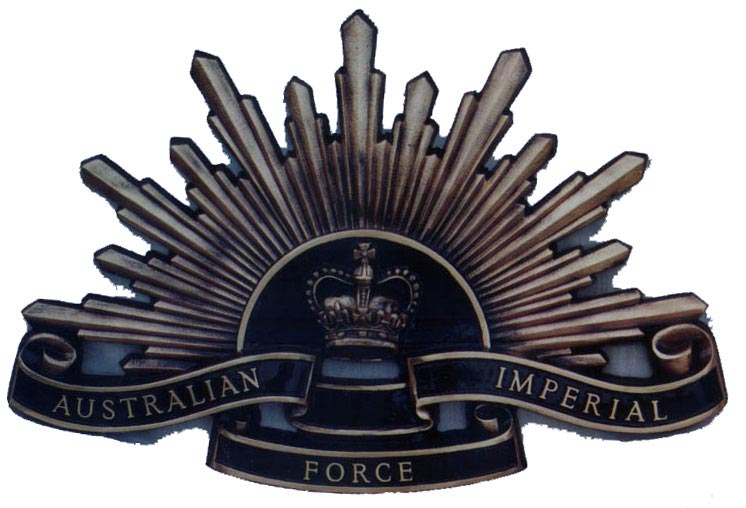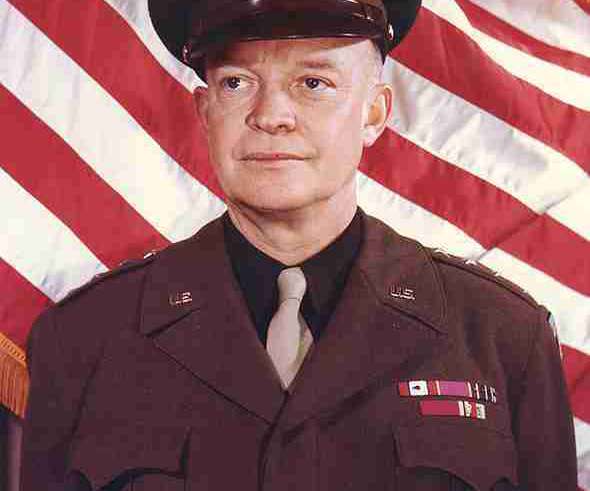By Humphrey McQueen
This essay is part two of “Taught to forget” that the author has given permission to republish.
Ever more complex
 The 1936 Report of Senator Gerald Nye’s Special Committee on Investigations of the Munitions Industry informed President General Eisenhower’s farewell broadcast on 17 January 1961 when he warned ‘against the acquisition of unwarranted influence … by the military-industrial complex.’ So as not to infringe the separation of powers, Eisenhower had deleted reference to members of congress in the grip of the arms and aircraft manufacturers but he had his sights set on a legislative-military-industrial complex. His original coupling revived with the prominence of Halliburton in the second Gulf war.
The 1936 Report of Senator Gerald Nye’s Special Committee on Investigations of the Munitions Industry informed President General Eisenhower’s farewell broadcast on 17 January 1961 when he warned ‘against the acquisition of unwarranted influence … by the military-industrial complex.’ So as not to infringe the separation of powers, Eisenhower had deleted reference to members of congress in the grip of the arms and aircraft manufacturers but he had his sights set on a legislative-military-industrial complex. His original coupling revived with the prominence of Halliburton in the second Gulf war.
What Eisenhower had called ‘the disastrous rise of misplaced power’ found endorsement when the Wall Street Journal editorialised on 6 July 1989 that Washington’s intransigence towards Iran stemmed from the losses suffered by Bechtel, ‘the corporation that engineered the world’ through its provision of oil-industry infrastructure. If this explanation is far too one-dimensional to be Leninist, it cannot be denied that Steve Betchel powered California’s New Right’s takeover of the Republican Party behind Nixon and Reagan from the 1960s. Reagan’s Secretary of State George Schultz and Secretary of Defence Caspar Weinberger had been senior Betchel executives, as were two Directors of the CIA, William McCone and Richard Helms.
Five years after Eisenhower’s warning that government contracts were replacing imagination in U.S. universities, Noam Chomsky inscribed ‘the New Mandarins of American Power’ into an academic-legislative-military-industrial complex. There was nothing new about the large and small attachments of academics and scientists to the war machine. In 1913, the Director of the Kaiser Wilhelm Institute, Fritz Haber, identified an iron catalyst for the production of the ammonia essential for explosives and fertilisers, a breakthrough which allowed Germany to contemplate war if cut off from supplies of Chile saltpeter, and a discovery which attracted a Nobel Prize in 1918. Haber also pioneered the application of chemistry to gas warfare in 1915. Meanwhile, the lecturer in English at the University of Queensland, J.J. Stable, did his bit as Chief Censor by leading a raid on the State Government Printer to stop the publication of anti-conscription speeches in Hansard. During the Cold War, the Vice-Chancellor at the Australian National University, Sir John Crawford, kept in contact with ASIO about his staff. In 1974, students at Flinders University liberated files from the office of their Vice-Chancellor, Roger Russell, to reveal his U.S. Army contracts for psych-ops against the peoples of Indo-China.
Nor did the world have to wait until the 2003 embedding of journalists for the corporate media to take its place in a media-academic-industrial-legislative-military cabal. William Randolph Hearst’s tabloids turned an accidental explosion in Havana in 1898 as an excuse for the U.S. to seize control of Cuba and the Philippines before waging genocidal war in the latter. The Hearst approach is summed up by the promise he allegedly made to his man in Havana: ‘You furnish the pictures and I’ll furnish the war.’
Shortly afterwards in the hope of overcoming distortions and inventions by a sensationalist and partisan press, progressive journalists adopted the word-perfect reporting of whatever a politician says, no matter how false they and their editors know it to be. This method has ended up with stenographers of power being drip-fed by government and corporate press releases. It is rare for any media outlet to juxtapose what someone said yesterday with what they are saying today – a role reserved for Private Eye. The hard-fact version of the News appeared just as the current 100-year war got under way and casualty lists boosted the circulation of metropolitan dailies. The discovery of the NEWS became the prime source of distraction and distortion as ‘Stop Press’ appeared in the early 1920s, hourly wireless bulletins from the 1930s, and now isolated flashes, thirty-second doorstops, or 126-character tweets. Because the NEWS-bite must exclude context, its ‘objectivity’ is more pernicious than Mass Murdoch’s most flagrant propaganda, inducing stupefaction and keeping us more ignorant than nature intended. To provide the context of commercial trade wars is to be biased, political and ideological. To serve up data devoid of meaning is to be objective.
Best they forget
The speciousness that ignores the trade component in war-making is exemplified in a 1962 essay, ‘The Spirit of ANZAC’, by now retired Colonel Arthur Burke, OAM, President of Queensland’s ANZAC Day Commemoration Committee. Burke tells school children that ‘New Zealand’s Maori wars in the early 1860s saw volunteers from the separate colonies of Australia assisting their Kiwi mates to establish independence in another developing country.’ This farrago must be a contender for the Peter Reith medal of how many falsehoods one can squeeze into a single sentence. Yet Burke’s tripe turns up in entries for the Simpson Prize Essay funded by the Department of Veterans Affairs, which hands wads of money to cash-strapped schools if they string along with its Play School version of conquest, plunder and slaughter. The Melbourne Herald had told the truth in August 1861 when it reported that British troops and 2,500 volunteers were being ferried across the Tasman to shoot ‘down the New Zealanders as savages because they won’t sell their land to the Government for an old song.’ God Save the Queen? The volunteers got grants of land in exchange for killing Maori.
Far more contemptible than Col. Burke on the Maori Wars is the push for a Boer War memorial along Canberra’s Anzac Parade. Its urgers propose to erect four life-size horsemen to represent an Australian patrol on the Veldt. What this country needs is a Boer War memorial with the Four Horsemen of the Apocalypse to mourn the 25,000 Boer women and children and at least 15,000 black Africans who died in British concentration camps. Around its base should be the 1902 words of Britain’s Liberal leader Sir Henry Campbell-Bannerman, prime minister from 1905-08: ‘When is a war not a war? When it is carried on by the methods of barbarism, as it is in South Africa.’ The execution of ‘Breaker’ Morant distracts from a strategy of atrocities and war crimes, just as Lt Calley and My Lai did for the ecocide waged against the Indo-Chinese. In 2001, the Memorial asked visitors to vote whether they thought Morant should have been shot. The question should have been whether the British cabinet and generals should have been hanged. The War Memorial does have the decency to record the top-level conspiracy behind the 1895 Jameson Raid to seize the Transvaal for the gold discovered at Witwatersrand nine years before. The concentration camps are mentioned but no death toll is given.
The older the displays at the Memorial, the more likely they are to broach uncomfortable truths by providing some context. Boeing’s sponsorship of the aircraft gallery weighs against any more shaming the devil.
The Memorial’s redecorated World War I Gallery perpetrates its lies by not so much as hinting at von Clausewitz’s recognition that ‘War is nothing but a continuation of politics with the admixture of other means.’ The wall-panels fail to link the Allied assaults on Kanakkale (Dardanelles) to the British Empire’s need to prop up Czardom by breaking through the straits to secure a warm-water port to supply Russian armies and to take out grain to feed the Allies. First Lord of the Admiralty Churchill also feared that the Russian autocrats would face revolution as they had after defeat by Britain’s ally, Japan, in 1904-5.[*]
Much of the context behind the tactical details of the Gelilolu (Gallipoli) landing have been forgotten, or were never known to more than a scattering of specialists. The A.N.Z.A.C Commemoration Committee remains loath to allocate any of its $150m. to the recall of the Russian strategy. The version that endures services the inventing of tradition.
Symbols
 Against this black-out, tiny points can spotlight significant legacies. Take the example of the ‘I.’ in A.I.F., which stands for ‘Imperial’, not Infantry, indicating the subordinate position of Australia within the Empire, a relationship confirmed in official images. In 1935, the postage stamp for the twentieth anniversary of the invasion of Turkey depicted the Cenotaph in London, a reminder of those whose interests the A.I.F. had died to uphold. The following year, the stamp for the twenty-fifth anniversary of the reign of George V had the King-Emperor mounted on a steed named ‘ANZAC’, a further illustration of how British interests sat astride the Australians and New Zealanders.
Against this black-out, tiny points can spotlight significant legacies. Take the example of the ‘I.’ in A.I.F., which stands for ‘Imperial’, not Infantry, indicating the subordinate position of Australia within the Empire, a relationship confirmed in official images. In 1935, the postage stamp for the twentieth anniversary of the invasion of Turkey depicted the Cenotaph in London, a reminder of those whose interests the A.I.F. had died to uphold. The following year, the stamp for the twenty-fifth anniversary of the reign of George V had the King-Emperor mounted on a steed named ‘ANZAC’, a further illustration of how British interests sat astride the Australians and New Zealanders.
Although trade follows flag, neither James Cook nor Arthur Phillip sailed under the current Union Jack which did not exist until after the forced march of Ireland into the Union in 1801; the Crosses of St George and St Andrew had been joined after London bribed the Scottish Parliament into Union in 1707. Thus, no Cronulla rioter could have had a grandfather who fought under the current Australian flag, unless he served in the Royal Australian Navy, because that design, based on the blue ensign, did not become the national flag until 1954. The ANZACs went ashore beneath the Union Jack as the A.I.F. did in North Africa, on the Western Front, and later in the Pacific.
One fine day
Curators at Darwin’s new ‘Bombing’ Memorial had a struggle to be allowed to include any context for the town’s ‘One Day of the War’, the air-raids on 19 February 1942. Nonetheless, their panels distort the rise of Japan by starting from 1868 with the Meiji Restoration and not with the 1853-4 assault under U.S. Commodore Perry, followed up in 1862 when the U.S. came back with the British and Dutch fleets to bombard the Shimonoseki Straits for trade treaties. Japan’s new rulers learnt that they could avoid being sliced up like the Chinese melon only if they behaved like their attackers in the scramble for resources and territories. The Japanese at Darwin were not repeating what the Europeans had done ninety years before in softening Japan up for an commercial invasion. The Japanese raids here were never more than interdiction to stop the Western Powers reclaiming colonies seized early in 1942.
If the West remembers its invasion of Japan, it is courtesy of Puccini’s Madama Butterfly, its anti-imperialist theme floating on the Star-Spangled Banner as the leitmotif for Lt Pinkerton who sings ‘The whole world over, on business or pleasure the Yankee travels’. The critic for the New York Herald, Gustave Kobbe, in his still popular Opera Book (1922- ) called on his fellow Americans to object to this use of their national anthem. Instead of rescoring the aria, most productions drown the politics of the U.S. takeover during 1898 of Cuba and its annexation of Hawaii and the Philippines in sentimentality and Nipponoiserie. Pinkerton’s ‘marriage’ to the child sex-slave Cio-Cio-san trades cash for gratification, a miniature of the European expectation of violating the whole country. Puccini softened the ending between its La Scala premiere early in 1904 and 1906 by excising scenes in which Pinkerton voices his racism and offers lucre as compensation for deserting his ‘wife’ and child.
Control the Past
If only George Santayana’s 1908 maxim that ‘those who cannot remember the past are condemned to repeat it’ were the worst we had to worry about. Rather, the obverse prevails with those who cling to invented traditions feeling compelled to re-enact them symbolically, for example, around ANZAC Day, as a prelude to reliving their distortions by sending further generations off to kill and be killed.
Kipling’s ‘Recessional’ (1897), with its refrain ‘Lest We Forget’, draws on Old Testament injunctions against hubris: ‘Lo, all our pomp of Yesterday, Is one with Ninevah and Tyre.’ The phrase’s transfer to respect for heroism and to honour sacrifice, notably, by underwriting Legacy’s support for the dependents of the dead and the mutilated, has taught us to forget its author’s apprehension that the mighty cannot endure. Two minutes silence in remembrance is nothing compared to a century of silencing the truism of a sordid trade war. Our liberties depend on our being eternally vigilant against mendacity and censorship.
Now all my lies are proved untrue
And I must face the men I slew.
What tale shall serve me here among
Mine angry and defrauded young?
Kipling (1919).
HUMPHREY McQUEEN is a Canberra-based activist and writer whose seventeen books include Gallipoli to Petrov, Arguing with Australian History (1984) and Japan to the Rescue, Australian Security around the Indonesian Archipelago during the American Century (1991).





